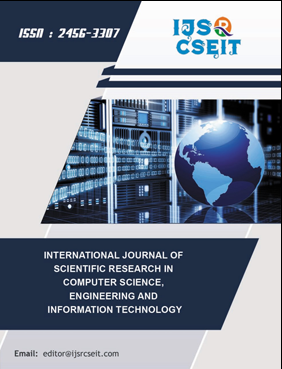Quantum Computing and Cybersecurity: Navigating the Next Frontier of Digital Security
DOI:
https://doi.org/10.32628/CSEIT251112155Keywords:
Post-Quantum Cryptography, Quantum Key Distribution, Shor's Algorithm, Quantum-Safe Security, Cryptographic TransitionAbstract
This article explores the profound impact of quantum computing on cybersecurity, highlighting the potential threats to current cryptographic systems and the emerging solutions in the field of quantum-safe security. It begins by explaining the fundamental principles of quantum computing, contrasting them with classical computing, and detailing how quantum algorithms like Shor's and Grover's pose significant risks to widely used encryption methods such as RSA and AES. The article then delves into the development of post-quantum cryptography, discussing various approaches including lattice-based, code-based, and multivariate polynomial cryptography, with a focus on the NIST standardization initiative. Additionally, it examines quantum cryptography techniques, particularly Quantum Key Distribution (QKD), as alternative methods for secure communication. The article concludes by addressing the challenges organizations face in transitioning to quantum-safe security, including expertise gaps, resource limitations, and financial implications. It emphasizes the urgency of preparing for the quantum era while acknowledging the complexities involved in implementing quantum-resistant measures across global networks. This comprehensive overview provides insights into the evolving landscape of cybersecurity in the face of advancing quantum technologies and underscores the critical need for proactive strategies to safeguard digital infrastructure in the coming quantum age.
Downloads
References
National Institute of Standards and Technology. (August 13, 2024.). “Post-Quantum Cryptography”. [Online] Available: https://csrc.nist.gov/projects/post-quantum-cryptography
Shor, P. W. (1997). “Polynomial-Time Algorithms for Prime Factorization and Discrete Logarithms on a Quantum Computer”. SIAM Journal on Computing, 26(5), 1484-1509. [Online] Available: https://doi.org/10.1137/S0097539795293172 DOI: https://doi.org/10.1137/S0097539795293172
National Institute of Standards and Technology. (2024). “Post-Quantum Cryptography Standardization”. [Online] Available: https://csrc.nist.gov/Projects/post-quantum-cryptography/post-quantum-cryptography-standardization
National Institute of Standards and Technology. (2022). “NIST Announces First Four Quantum-Resistant Cryptographic Algorithms”. [Online] Available: https://www.nist.gov/news-events/news/2022/07/nist-announces-first-four-quantum-resistant-cryptographic-algorithms
Diamanti, E., Lo, H. K., Qi, B., & Yuan, Z. (2016). “Practical challenges in quantum key distribution”. npj Quantum Information, 2(1), 16025. [Online] Available: https://www.nature.com/articles/npjqi201625 DOI: https://doi.org/10.1038/npjqi.2016.25
Deloitte, “Quantum cyber readiness” [Online]Available: https://www2.deloitte.com/content/dam/Deloitte/us/Documents/risk/us-csr-quantum-placemat.pdf
European Union Agency for Cybersecurity (ENISA). (2021). “Post-Quantum Cryptography: Current state and quantum mitigation”. [Online] Available: https://www.enisa.europa.eu/publications/post-quantum-cryptography-current-state-and-quantum-mitigation
Mohseni M, Read P, Neven H, Boixo S, Denchev V, Babbush R, Fowler A, Smelyanskiy V, Martinis J. “Commercialize quantum technologies in five years”. Nature. 2017 Mar 3;543(7644):171-174. doi: 10.1038/543171a. PMID: 28277529. [Online] Available: https://pubmed.ncbi.nlm.nih.gov/28277529/ DOI: https://doi.org/10.1038/543171a
Downloads
Published
Issue
Section
License
Copyright (c) 2025 International Journal of Scientific Research in Computer Science, Engineering and Information Technology

This work is licensed under a Creative Commons Attribution 4.0 International License.








